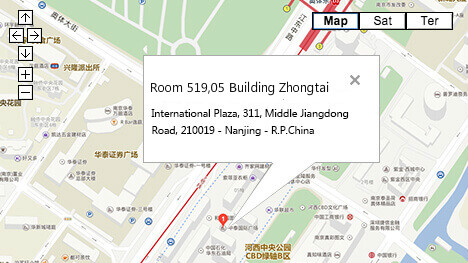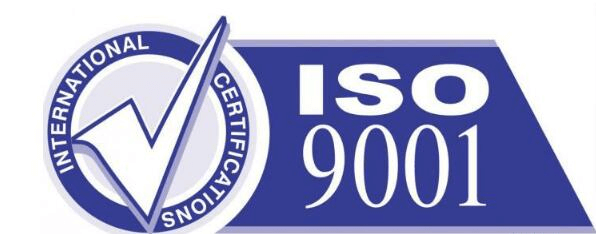Introduction of ISO9001
ISO9001 certification is one of the core standards of a group of quality management systems included in the ISO9000 standards. ISO9000 family standard is the International Organization for Standardization (ISO) in 1994 put forward the concept, refers to “by ISO/ TC176 (ISO Quality Management and Quality Assurance Technical Committee) international standards.
Basic introduction
ISO9001 certification is used to demonstrate the organization’s ability to provide products that meet customer requirements and applicable regulatory requirements, with the aim of increasing customer satisfaction. With the unceasing expansion of commodity economy and increasing internationalization, in order to improve the reputation of products, reduce repeated inspection, weaken and eliminate trade technical barriers, safeguard the rights and interests of producers, distributors, users and consumers, the certification party is not controlled by the economic interests of both sides, fair and scientific.
All through the ISO9001 certification of the enterprise, in the various management system integration has reached the international standards, indicates that the enterprise can continue to provide customers with expectations and satisfaction of qualified products. From the perspective of consumers, the company takes customers as the center, can meet customer needs, achieve customer satisfaction, do not induce consumers.
The certification process
Identifying and diagnosing the original quality system
Appointment of management representatives, the establishment of ISO9000 implementation organization; Setting goals and incentives;
Personnel at all levels shall receive necessary training in management consciousness and quality consciousness;
ISO9001 standard knowledge training;
Compile quality system files;
Quality system file large-scale publicity, training, release, trial operation;
Management training;
Internal auditors are trained;
Several audits of the internal quality system;
Management review on the basis of internal audit;
Perfect and improve the quality control system
Apply for certification;
Certification company file audit;
On-site audit;
Corrective measures;
Approval;
Registration and certification;
Perfect after-sales service.
The required information
Proof that the applicant organization has independent legal qualifications (such as valid business license and organization code certificate with annual inspection)
License, qualification certificate, etc. within the validity period (copy)
Production process flow chart/working process diagram or working principle diagram
Introduction of the product applied for certification (including information on technology, output, use, quality, sales, etc.)
Product standard list and name laws and regulations related to the product/process
The basic requirements
First, control the quality of all processes.
ISO9000 family standards are based on the understanding that “all work is done through the process”. The quality management of an organization is realized through the management of various processes within the organization, which is the theoretical basis of the ISO9000 family on quality management. When an organization in order to implement the quality system and quality system planning, the first is to combine the specific situation of the organization to determine which process should be, and then analyze each process needs to carry out quality activities, determine the effective control measures and methods should be taken.
Two, the starting point of the control process is to prevent unqualified.
In all stages of the product life cycle, from the initial identification of market needs to the final requirements of the control of all processes are reflected in the concept of prevention. Such as:
— Control the quality of market research and marketing, develop new products on the basis of accurately determining the market demand, prevent blind development resulting in unmarketable and unsuitable for market demand, waste of manpower and material resources. — Control the quality of the design process. Through design review, design validation, design validation and other activities, ensure that the design output meets the input requirements, to ensure that the product meets the needs of users. Prevent design quality problems, resulting in product quality congenital unqualified and defects, or to the subsequent process caused losses.
— Control the quality of purchasing. Select qualified suppliers and control their supply quality to ensure that the raw materials, purchased parts and cooperative parts required for production meet the specified quality requirements, and prevent the use of unqualified purchased products from affecting the quality of finished products.
— Control the quality of the production process. Determine and implement the appropriate production method, use the appropriate equipment, maintain the normal working capacity of the equipment and the required working environment, control the parameters and personnel skills that affect the quality, ensure that the manufacturing meets the quality requirements specified in the design, and prevent the production of nonconforming products.
— Control inspection and testing. Perform incoming inspection, in-process inspection and finished product inspection according to quality plan and documented procedures to ensure product quality meets requirements, prevent non-conforming outsourced products from being put into production, prevent non-conforming process products from being transferred to the next process, and prevent non-conforming finished products from being delivered to customers.
— Control handling, storage, packaging, protection and delivery. Take effective measures to protect products from damage and deterioration at all these links.
— Control the quality of inspection, measurement and experimental equipment, ensure that qualified testing means are used for inspection and testing, ensure the validity of inspection and test results, and prevent incorrect determination of product quality caused by unqualified testing means.
— Control documents and materials, ensure that all documents and materials used at the site are current and effective, prevent the use of outdated or obsolete documents, which may cause unqualified product or quality system elements.
— Corrective and preventive measures. When non-conformities (including product or quality system) or customer complaints occur, the cause should be identified and corrective actions should be taken to prevent the recurrence of the problem. Also should be through a variety of quality information analysis, take the initiative to find potential problems, prevent the emergence of problems, so as to improve the quality of the product.
— Full staff training, for all engaged in the quality of the impact of the staff training, to ensure that they can be competent for the job, to prevent the lack of knowledge or skills, resulting in product or quality system unqualified.
Third, the central task of quality management is to establish and implement a documented quality system.
Quality management is the key to the operation of the whole quality system, so the implementation of quality management must establish a quality system. ISO9000 family believes that the quality system is an influential system, has a strong operability and inspection. Requires an organization to establish a quality system that is documented and maintained. Typical quality system documents are composed of three levels, namely quality manual, quality system procedures and other quality documents. The quality manual is a document describing the quality system according to the quality policy stipulated by the organization and the applicable ISO9000 family standard. The quality manual may include the quality system procedures and may indicate where the quality system procedures are specified. Quality system procedure is to control the quality of each process, how to carry out the effective measures and methods of quality activities, is the document used by the relevant functional departments. Other quality documents include work instructions, reports, forms, etc., which are more detailed work documents used by workers. The basic requirements of the quality system document content are: what should be done should be written, written to be done, the results should be recorded, that is, write what is needed, write what is done, write what is done, remember what is done.
IV. Continuous quality improvement:
Quality improvement is an important quality system element, GB/T19004-1 standard stipulates that when the quality system is implemented, the management of the organization should ensure that its quality system can promote and promote continuous quality improvement. Quality improvement includes product quality improvement and work quality improvement. Striving for customer satisfaction and achieving continuous quality improvement should be the eternal goal pursued by managers at all levels. A quality system without quality improvement can only maintain quality. Quality improvement aims at improving quality. Quality improvement through improvement process to achieve, is a kind of to pursue higher process benefits and efficiency as the goal.
An effective quality system should meet the needs and interests of both the customer and the organization.
That is, for customers, the organization needs to be able to deliver the expected quality, and can continue to maintain the quality; Achieving and maintaining the desired quality at an appropriate cost to the organization. It meets the needs and expectations of customers and protects the interests of the organization.
6. Regularly evaluate the quality system.
Its purpose is to ensure that the implementation of the quality activities and their results conform to the planned arrangements, to ensure the continued suitability and effectiveness of the quality system. In evaluating, the following three basic questions must be asked for each process being evaluated:
A. Has the process been determined? Are process procedures properly documented?
B. Is the process fully developed and implemented in accordance with the documentation?
C. Is the process effective in providing the desired results?
Seven, do a good job in quality management key leadership. Top management of the organization should do the following five things in quality management:
A. Determine quality policy. The quality policy, including quality objectives and commitment to quality, shall be established by the manager with the responsibility of execution.
B. Determine the responsibilities and authority of each position.
C. Allocate resources. Including financial and material resources (including manpower).
D. Appoint a management representative to be responsible for the quality system.
E. Responsible for management review. To ensure the continued suitability and effectiveness of the quality system.
Review history, ISO9000 standards originated from the progress of science and technology development. Looking forward to the future, the development of high and new technology is to be guided by ISO9000 standards. The application of mature ISO9000 series standards in the field of science and technology provides endless power for the progress of science and technology.
This standard absorbs the international advanced quality management concept, adopts the quality philosophy of PDCA cycle, and has a strong practicality and guidance for both the supply and demand of products and services. Standard applies to all walks of life, the world has hundreds of thousands of enterprises, governments, service organizations and other types of institutions into the ISO9000 and obtained third-party certification. Through the ISO9000 certification, has become the organization to enter the market and win the basic conditions of customer trust.

